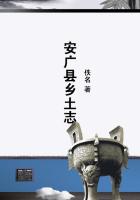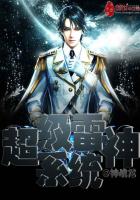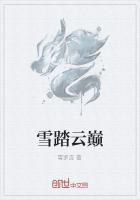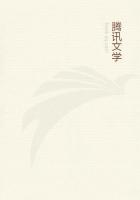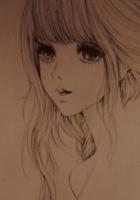[8] L. Thorndike: The Place of Magic in the Intellectual History of Europe, New York, 1905, p. 29.
The point of interest to us is that in the Pyramid Texts--"the oldest chapter in human thinking preserved to us, the remotest reach in the intellectual history of man which we are now able to discern"[9]-- one of their six-fold contents relates to the practice of magic. A deep belief existed as to its efficacy, particularly in guiding the dead, who were said to be glorious by reason of mouths equipped with the charms, prayers and ritual of the Pyramid Texts, armed with which alone could the soul escape the innumerable dangers and ordeals of the passage through another world. Man has never lost his belief in the efficacy of magic, in the widest sense of the term. Only a very few of the most intellectual nations have escaped from its shackles. Nobody else has so clearly expressed the origins and relations of magic as Pliny in his "Natural History."[10] "Now, if a man consider the thing well, no marvaile it is that it hath continued thus in so great request and authoritie; for it is the onely Science which seemeth to comprise in itselfe three possessions besides, which have the command and rule of mans mind above any other whatsoever. For to begin withall, no man doubteth but that Magicke tooke root first, and proceeded from Physicke, under the presence of maintaining health, curing, and preventing diseases: things plausible to the world, crept and insinuated farther into the heart of man, with a deepe conceit of some high and divine matter therein more than ordinarie, and in comparison whereof, all other Physicke was but basely accounted. And having thus made way and entrance, the better to fortifie it selfe, and to give a goodly colour and lustre to those fair and flattering promises of things, which our nature is most given to hearken after, on goeth the habite also and cloake of religion: a point, I may tell you, that even in these daies holdeth captivate the spirit of man, and draweth away with it a greater part of the world, and nothing so much. But not content with this successe and good proceeding, to gather more strength and win a greater name, shee entermingled with medicinable receipts and religious ceremonies, the skill of Astrologie and arts Mathematicall; presuming upon this, That all men by nature are very curious and desirous to know their future fortunes, and what shall betide them hereafter, persuading themselves, that all such foreknowledge dependeth upon the course and influence of the starres, which give the truest and most certain light of things to come. Being thus wholly possessed of men, and having their senses and understanding by this meanes fast ynough bound with three sure chains, no marvell if this art grew in processe of time to such an head, that it was and is at this day reputed by most nations of the earth for the paragon and cheefe of all sciences: insomuch as the mightie kings and monarchs of the Levant are altogether ruled and governed thereby."
[9] Breasted: Development of Religion and Thought in Ancient Egypt, New York, 1912, p. 84.
[10] The Historie of the World, commonly called the Naturall Historie of C. Plinius Secundus, translated into English by Philemon Holland, Doctor in Physieke, London, 1601, Vol. II, p. 371, Bk. XXX, Chap. I, Sect. 1.
The second world-wide practice which finds its earliest record among the Egyptians is the use secretions and parts of the animal body as medicine. The practice was one of great antiquity with primitive man, but the papyri already mentioned contain the earliest known records. Saliva, urine, bile, faeces, various parts of the body, dried and powdered, worms, insects, snakes were important ingredients in the pharmacopoeia. The practice became very widespread throughout the ancient world. Its extent and importance may be best gathered from chapters VII and VIII in the 28th book of Pliny's "Natural History." Several remedies are mentioned as derived from man; others from the elephant, lion, camel, crocodile, and some seventy-nine are prepared from the hyaena. The practice was widely prevalent throughout the Middle Ages, and the pharmacopoeia of the seventeenth and even of the eighteenth century contains many extraordinary ingredients. "The Royal Pharmacopoeia" of Moses Charras (London ed., 1678), the most scientific work of the day, is full of organotherapy and directions for the preparation of medicines from the most loathsome excretions. A curious thing is that with the discoveries of the mummies a belief arose as to the great efficacy of powdered mummy in various maladies. As Sir Thomas Browne remarks in his "Urn Burial": "Mummy has become merchandize. Mizraim cures wounds, and Pharaoh is sold for balsams."
One formula in everyday use has come to us in a curious way from the Egyptians. In the Osiris myth, the youthful Horus loses an eye in his battle with Set. This eye, the symbol of sacrifice, became, next to the sacred beetle, the most common talisman of the country, and all museums are rich in models of the Horus eye in glass or stone.
"When alchemy or chemistry, which had its cradle in Egypt, and derived its name from Khami, an old title for this country, passed to the hands of the Greeks, and later of the Arabs, this sign passed with it. It was also adopted to some extent by the Gnostics of the early Christian church in Egypt. In a cursive form it is found in mediaeval translations of the works of Ptolemy the astrologer, as the sign of the planet Jupiter. As such it was placed upon horoscopes and upon formula containing drugs made for administration to the body, so that the harmful properties of these drugs might be removed under the influence of the lucky planet. At present, in a slightly modified form, it still figures at the top of prescriptions written daily in Great Britain (Rx)."[11]
[11] John D. Comrie: Medicine among the Assyrians and Egyptians in 1500 B.C., Edinburgh Medical Journal, 1909, n. s., II, 119.

